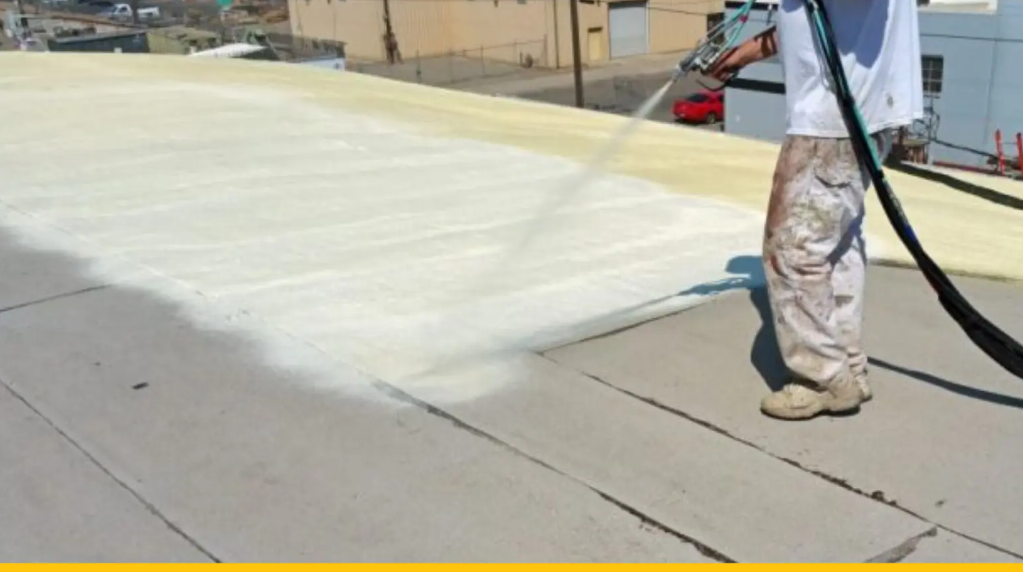Spray Polyurethane Foam Roofing
Why is this type of foam roofing ideal for industrial, commercial, construction, and residential facilities that want a long-lasting, efficient, energy-saving, environmentally-friendly, and economic option? Roofing contractors want to use the highest-quality materials so that they, added to an outstanding team of experienced staffers, will happily satisfy their customers. They also want their customers to spread word-of-mouth recommendations to their business and homeowner friends who may also have construction, insulation, or renovation projects.
Following are just some of the reasons why Spray Polyurethane Foam Roofing is superior:
* Spray polyurethane foam (SPF) is a rigid plastic insulation that is sprayed in place. It is widely used to insulate buildings and seal gaps and cracks.
* It makes a building more energy-efficient and comfortable for those who work inside. Energy costs are lowered because the foam keeps heat outside in the summer and inside in the winter. The silicone top coating protects the foam, resists UV light, and reduces heat absorption.
* The ease of installation saves time and money. Applying the foam and coating is quick and simply means spraying the liquid on the existing cleaned roof of shingles, asphalt, metal, concrete, or wood. That conforms to all roof types and shapes, even irregularly-shaped ones.
* SPF insulation resists heat transfer and provides a highly effective answer to reducing unwanted air infiltration through seams, cracks, and joints. It provides air, thermal, and moisture barriers, which provides better insulation.
* SPF eliminates the roof vulnerability due to penetrations and seams that cause leaks. Since the mixture is applied as a liquid, it is seamless and fills gaps and cracks in the existing roof and substrate. It seals all penetrations with no fasteners or joints.
* The application of the foam levels the roof to decrease ponding water. The material expands and contracts with outside temperatures, which reduces splitting and cracks.
* The three types of SPF are (1) High-Density for insulation and additional purposes, (2) Medium-Density for filling interior wall cavities, continuous insulation, and unvented attics, (3) Low-Density also for interior wall cavity fill, and unvented attics. Your contractor will know which one is appropriate for your project.
An SPF roof requires minimal preventative maintenance or repairs if inspected semi-annually and following any event that may have caused damage. If a silicone recoating becomes necessary, there is no costly tear-off of the existing materials because the new coat is applied on top of the current one. If properly maintained, an SPF roof can last for 30 to 50 years!
.png)


.jpeg)
